Leather seats are a luxurious addition to any car. However, over time they can become loose and uncomfortable. If this is the case with your leather seats, don’t worry – we have the ultimate guide to tightening them up! In this blog post, we will answer some common questions about how to tighten leather seats, as well as recommend some of the best products on the market. We hope you find this information helpful!
Why Do Leather Seats Wrinkle & Stretch
Leather seats can wrinkle and stretch for a variety of reasons. This includes exposure to extreme temperature and humidity levels, contact with harsh cleaners, or simply age. Whatever the reason may be, it’s important to take steps to properly tighten up your leather seats in order to keep them looking their best and provide you with maximum comfort while driving. [1]
Best Ways To Tighten Leather Seats
There are quite a few methods To Tighten Leather Seats, but let’s look at the most effective according to people.
Using A Heat Gun
One of the most common ways to tighten leather seats is by using a heat gun. This method requires a little more time and effort but can be done with ease if done correctly. To start, you will need to take off any seat covers or other fabric that may be covering your leather seat.
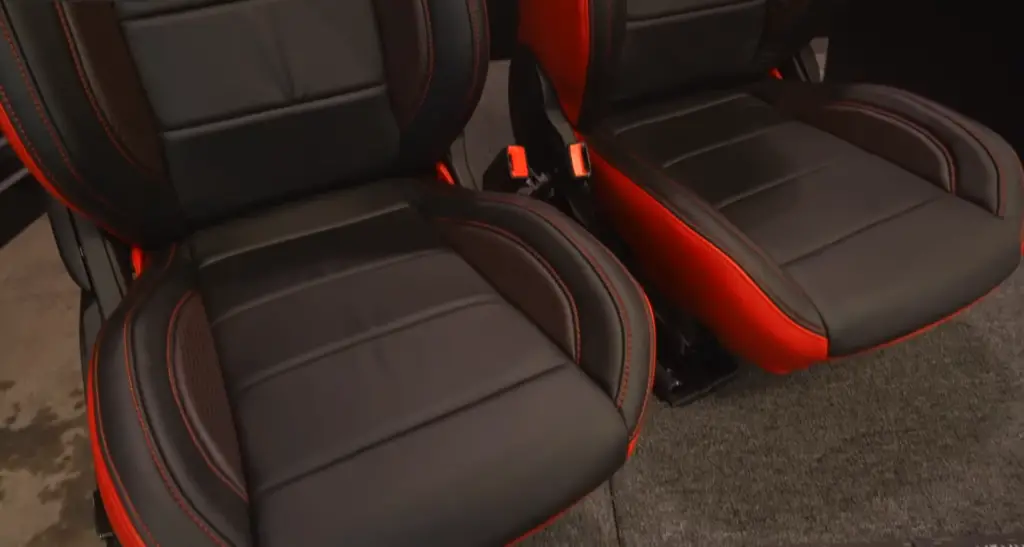
Once you have finished applying heat to the leather seat, it is best to test out its tightness by pushing down on different sections of the leather with your hand or a light object such as an eraser. The goal here is to make sure that after the heat has been applied, the leather feels taught and tight to the touch. If you don’t feel any tension when pressing on the seat, then apply more heat until it does.
Using An Iron
One of the most effective methods for tightening leather seats is to use an iron. This method requires patience and lots of safety precautions, but it can be very successful. To start, make sure that you have a moist cloth or thick towel placed over the leather seat before you begin to apply heat with the iron. Once the cloth is in place, plug in your iron and set it on a low setting – no higher than 200 degrees Fahrenheit (93 C). Gently run the hot iron across the surface of the seat in small circular motions for 10-15 minutes. Do not press down too hard as this could damage or discolor the leather. Afterward, let your seat cool for a few minutes before testing the tightness.
Using A Steamer
Using a steamer is one of the most efficient and effective ways to quickly and safely tighten leather seats. Steamers are specifically designed to penetrate deep into the fibers of the leather, allowing you to soften and reshape it as needed. When using a steamer, be sure to hold it at least an inch away from your seat so that you don’t cause any damage.
You also want to make sure that you’re using even strokes across the entire surface of the seat in order for the steam to evenly penetrate into all parts of the material. Once you’ve finished steaming, use a soft cloth or brush to gently pat down and shape your seat back into its original form. Be careful not to tug and pull too hard, as this can cause further damage.
Using A Hair Dryer
One way to tighten leather seats is by using a hair dryer. This method is simple and can be done at home without any special tools or materials.
First, make sure the surface of the seat is clean and dry.
Next, use a heat gun or hair dryer set to low heat to apply gentle, even heat to the area that needs tightening. Make sure not to overheat the leather or it could be damaged. Move in a circular motion as you apply heat so that it distributes evenly across the section.
Once you have heated up your seat, press lightly on it until it fits snugly and looks uniformly tight. Allow the leather to cool down before you sit on it so that the leather does not become misshapen. [2]
Tips For Tighten Leather Seats
- Clean and condition the leather: This should be done before any other task to ensure you don’t damage the leather while tightening it. Use a gentle, pH-neutral cleaner followed by an appropriate leather conditioner to bring back its suppleness and softness;
- Loosen the screws or bolts that hold the seat cover in place: This is usually found underneath the seat cover and will need to be loosened before you can start tightening it up. Make sure to keep track of where each screw/bolt was located so you can easily put them back later on;
- Pull at different parts of the seat cover: Before starting, make sure there are no wrinkles or creases in your leather as this could cause it to tear. Using both hands, pull evenly at different sections of the cover and tug to create tension;
- Add a foam insert: If you find that your leather seat cover is still too loose, adding a thin layer of foam between the frame and seat cover can help tighten it up. Just make sure to take proper measurements before cutting or shaping the foam so that it fits properly;
- Secure with screws or bolts: Once everything looks in place, screw or bolt back the original screws/bolts to keep your newly tightened leather seat secure. Make sure everything is snug and there are no gaps or creases in the leather before tightening down completely;
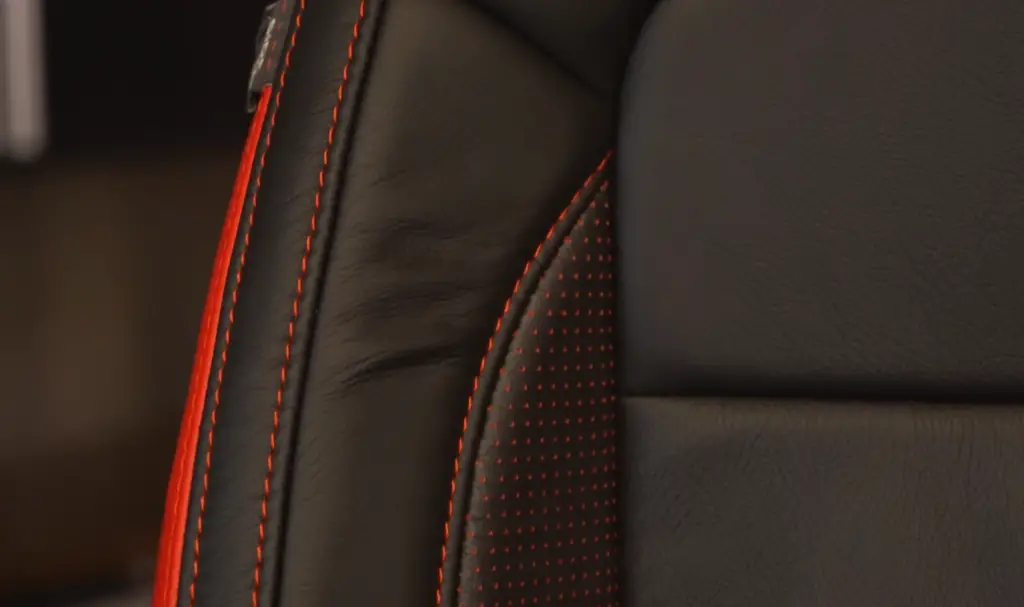
Following these steps should help you achieve a tighter and more secure leather seat. Keep in mind that leather seats do require maintenance, so make sure to clean and condition your seat regularly to keep it looking good for years to come. [3]
How to Prevent Leather Seats From Stretching?
If you want to keep your leather seats from stretching, there are some simple things you can do:
- First, frequent cleaning and conditioning will help preserve the leather and make it less likely to stretch over time;
- Second, invest in a quality seat cover or slipcover that is tailored to your specific car’s make and model;
- Finally, schedule regular professional detailing services for your car which will help clean and condition the leather as well as protect it from sun damage and wear-and-tear caused by everyday use [4];
FAQ
How do you fix ripples in leather?
Ripples in leather can be caused by wear and tear, sitting improperly on the seat, or poor installation. To fix ripples in your leather seats, you’ll first need to determine the cause of the issue. If it was caused by improper installation or positioning of the seat, you may need to have a professional repair it. However, if it is just general wear and tear, there are several products available that will help restore the leather’s shape and texture without damaging it further.
How do you get pressure dents out of leather car seats?
If your leather car seat has pressure dents, it can be tempting to try and remove them yourself. However, this is not recommended as it could potentially damage the material. Instead, take your vehicle to a professional upholsterer who can use special tools to steam and massage the area until the dent disappears. This may require several treatments before yielding positive results, but it is worth it for the long-term durability of your leather seats.
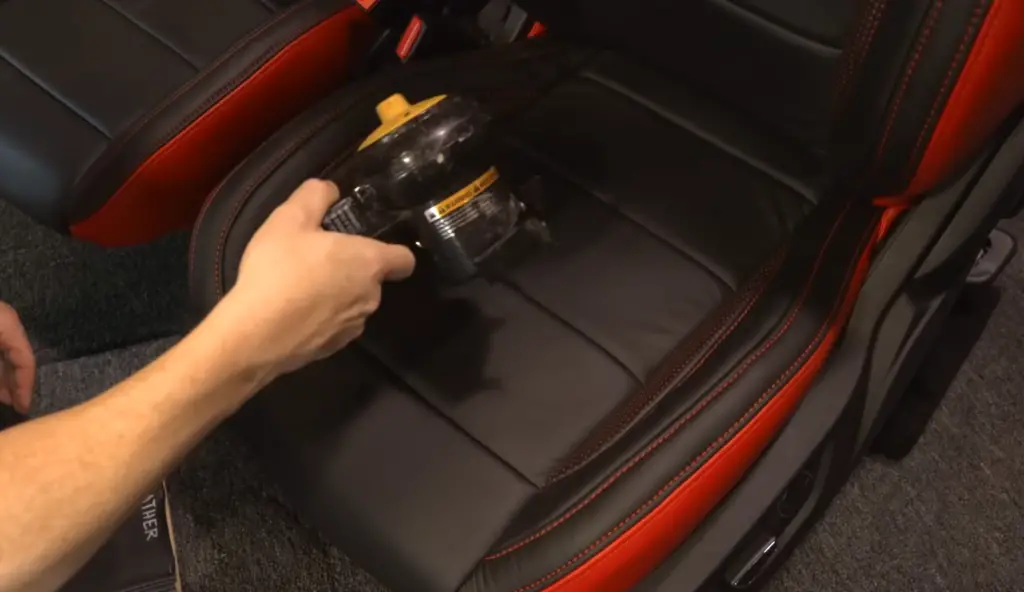
How do you reshape leather seats?
One of the most common questions about leather seats is how to reshape them and give them a more comfortable fit. Unfortunately, it can be difficult to do this without damaging the leather or making it look worse than before. Fortunately, there are steps you can take to reshape your leather seats without causing damage.
The first step is to use a steam cleaner in the area where you want to reshape the seat. This will help soften up the leather and make it easier for you to manipulate. Once the area has been softened with steam, you will need something to push against while adjusting the shape of your seat. A good tool for this purpose is an old towel that’s been rolled up into a tube. Place the towel against the area of your seat that you want to reshape and press gently but firmly until you’ve achieved the desired shape. Finally, use a leather conditioner to help restore moisture and softness back into the leather.
Will katzkin leather tighten up?
Yes, katzkin leather can be tightened. In fact, the process is relatively easy and straightforward. For example, if your katzkin leather seats are starting to sag due to age or wear and tear, you can simply tighten them up by using Katzkin’s Leather Care Kit. The kit includes a conditioner that helps keep your leather soft and supple, as well as an adjustable tensioning tool for tightening up sagging areas. Simply apply the conditioner to the areas in need of tightening, then use the tensioning tool to slowly increase the pressure until you reach your desired level of firmness.
You may also want to consider replacing any broken springs or worn padding that could be contributing to the sagging issue. Additionally, some Katzkin leather seats come with adjustable lumbar support that can be adjusted for a custom fit.
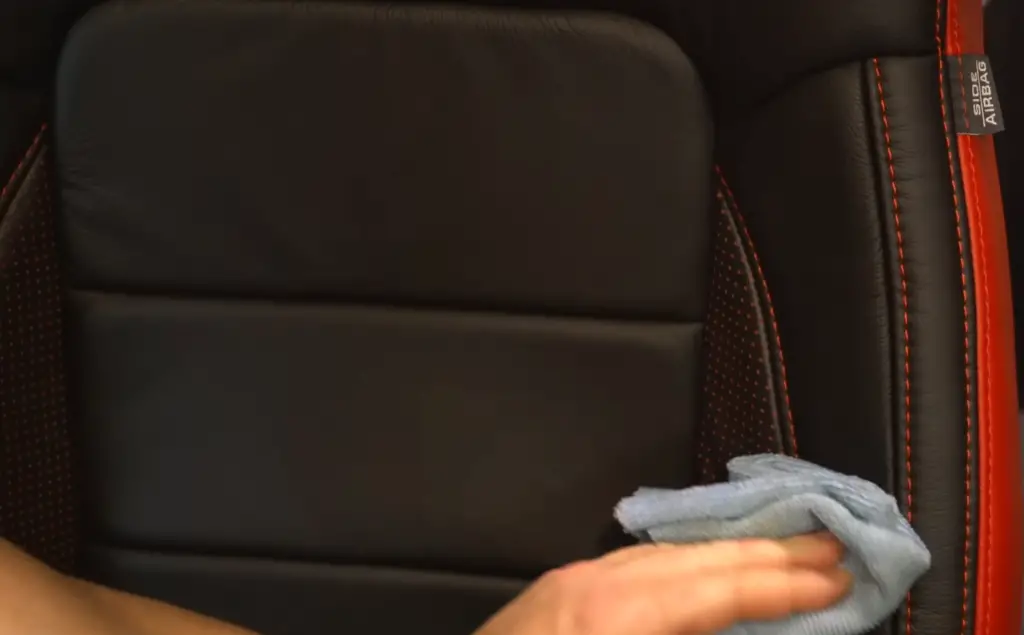
How can I make my leather tight again?
Leather can become loose and saggy over time due to normal wear and tear. Fortunately, there are a few methods you can use to make your leather tight again:
- Clean and condition the leather: Cleaning and conditioning the leather helps restore it to its original form;
- Tighten the stitching: Over time, stitching in upholstery tends to loosen which causes increased sagging and wrinkling in the leather;
- Use a leather stretcher: A leather stretcher is a tool used to stretch out sagging leather;
- Replace the foam cushion: If your foam cushion has become worn down over time, it may be time to replace it with one that’s thicker and firmer;
- Invest in a new seat cover: If all else fails, you can always purchase a new seat cover for your leather seat;
These methods should help you restore the tautness of your leather seating area and keep it looking great for years to come.
Can leather be stiffened?
Yes, leather can be stiffened. The most common way to do this is with a leather conditioner or treatment that contains oils, waxes, and/or solvents. These ingredients help to penetrate the leather and keep it supple while also increasing its flexibility. You will want to choose a product specifically designed for use on leather furniture, as other products may not provide the desired results.
Once you have chosen your conditioning product, apply it liberally to the area that needs stiffening by following the instructions on the bottle. Allow it to fully soak in before buffing away any excess with a soft cloth. This should give your leather item an extra layer of protection against wear and tear as well as add stiffness back into the material.
Can leather be adjusted?
Yes, leather seats can be adjusted. Depending on the type of car and the age of the seat, you may be able to adjust your leather seats by yourself or with the help of a professional. It is important to note that adjusting leather seats can cause damage if done incorrectly, so it is best to consult with an expert before attempting any adjustments.
How do you flatten stretched leather?
Stretched leather is a common problem for leather furniture and car seats. Fortunately, there are some easy solutions that can help. One option is to use a product designed specifically for stretching leather, such as Leather Rescue’s Natural Leather Conditioner. This conditioner has natural ingredients that help stretch the leather back into shape when used according to the instructions on the bottle. Another solution is to use a mixture of warm water and mild soap or detergent with a soft cloth or sponge. Gently wipe down the area being stretched until it is damp but not soaked. Then, leave it for about an hour before wiping off any excess moisture with another dry cloth. This should help stretch out the leather and reduce any wrinkling or sagging.
What causes leather to warp?
Leather is a flexible material that has been used for centuries to make furniture, clothing, and other items. However, over time leather can warp or stretch as a result of changes in humidity or temperature. The sun’s ultraviolet rays can also cause the leather to dry out and become brittle, leading to cracks or tears. When this happens, the seat may become loose or saggy.
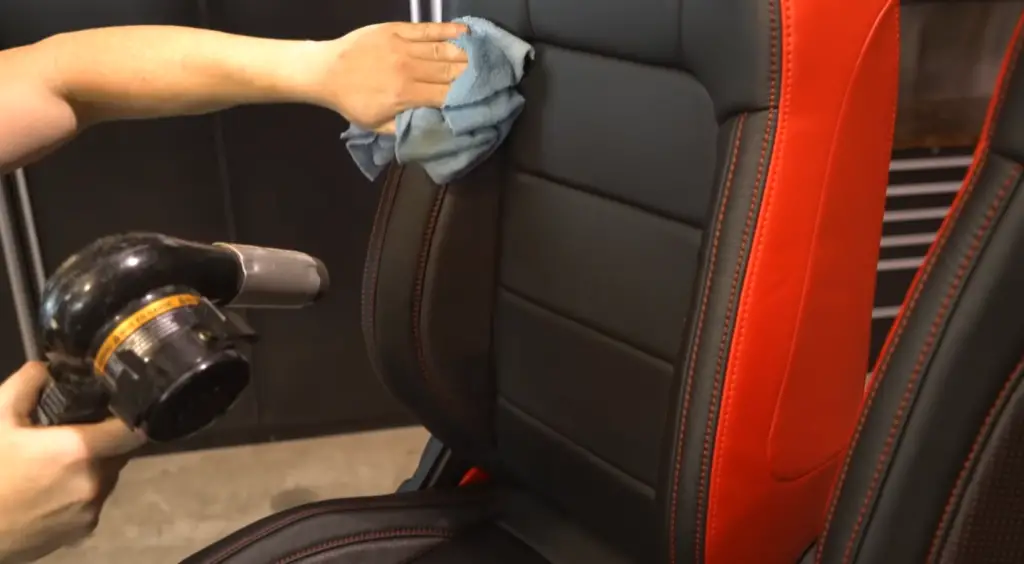
Can you repair dented leather?
Yes, you can repair dented leather. Depending on the type and size of the dent, there are various techniques that can be used to fix it. For small dents, using a hairdryer to heat up the area and a spoon to push out the dent may work. For larger dents, an upholstery steam cleaner can be used to help lift and shape the leather. If all else fails, professional upholstery repair services are available. Also, most auto supply stores carry leather repair kits that come with instructions and all the supplies needed for DIY repairs. However, keep in mind that none of these methods is a guarantee, so be sure to take any necessary steps to prevent dents from occurring.
Useful Video: How To: Clean and Get Rid of Sagging Leather Seats!
Conclusion
Now that you’ve read through this comprehensive guide, you should have a good understanding of how to properly tighten leather seats. You’ll know the best practices and methods to use, as well as the different products available to easily and effectively get the job done. Whether it’s a leather couch or car seat in need of repair, you can now confidently tackle the task of tightening leather seats. With the right tools and techniques, it’s easy to get your leather furniture or car upholstery looking and feeling new again!
References:
- https://www.leatherskill.com/how-to-tighten-leather-seats/
- https://www.wikihow.com/Fix-Wrinkled-Leather-Car-Seats
- https://favoredleather.com/why-do-leather-car-seats-wrinkle/
- https://www.alborestoration.com/blog/how-to-fix-cracks-tears-and-holes-in-leather-car-seats







I’ve had leather seats in my car for years now and over time they definitely get looser and start to sag. Recently I tried using leather conditioner and it’s made a huge difference in tightening them back up. I put a decent amount of conditioner on a microfiber cloth and rubbed it all over the seats in circular motions. Let it soak in for about 5 minutes before buffing off any excess. I was amazed at how much more supple and tighter the leather felt after just one treatment. It was like getting brand new seats again! Highly recommend leather conditioner as an easy fix to tighten loose leather seats.
My husband loves his leather recliner but the seat was getting pretty loose and saggy looking. I didn’t want to spend a ton of money getting it professionally tightened so I decided to try that homemade leather shrinker solution I found online. All it takes is some rubbing alcohol, neatsfoot oil, and water mixed together in a spray bottle. I sprayed it liberally all over the leather, let it soak in for 15 minutes, then went over it with a hair dryer to make sure it fully dried. The leather definitely shrank up and felt tighter just from that one application. Much cheaper and easier than I expected. Just have to be careful using the hair dryer not to overdo it.
As someone who drives a lot for work, I’ve put a lot of mileage on my car’s leather seats. Over time I noticed the sides were getting loose and sagging inward. Online forums recommended using leather seat tightening kits so I figured I’d give it a try. I bought an inexpensive kit on Amazon that came with leather conditioning oil and some buckles with bolts to pull the sides tighter. It was pretty easy to install following the instructions. I put the bolts through the bottom of the seat frame and tightened the buckles little by little. Combined with the conditioner, my seats are looking and feeling great again with a fraction of the cost of professional tightening. Definitely a handy DIY fix.
The leather seats in my vintage Mustang have gotten increasingly loose over the years to the point it just looks sloppy. I tried a few DIY tricks like conditioners and shrinkers, but nothing gave me the firm fit I wanted. I finally broke down and called a local auto upholstery shop and had them professionally tighten the seats. It wasn’t cheap, but wow what a difference! They were able to reinforce the seat frame and stitch the leather tighter in all the right places. The seats look tailored and feel snug in all the right spots again. Wish I would have just done this years ago. If you really want your loose seats tightened back to perfection, call the pros.
I love the look of quality leather furniture but my old leather couch was getting that sagging, worn out look. I did some research and found out you can tighten leather with a simple solution of vinegar and water. I mixed a cup of each and used a spray bottle to spritz it all over the couch cushions and backs. I let it soak in for about 20 minutes before gently stretching and smoothing the leather by hand as it dried. The vinegar helped tighten the fibers while the water kept it just pliable enough to pull smooth. It took a couple treatments, but my couch cushions are fuller and the leather has a tighter look overall. Much cheaper than buying new furniture or calling in a pro!
I picked up a used leather chair at a thrift store for a steal, but the seat was very loose and saggy. I wanted to tighten it up before using it regularly. I’d heard good things about using tightened wrapped in plastic wrap to shrink and tighten leather. So I tightly wrapped the entire seat with a couple layers of plastic wrap and left it for about 3 days. When I unwrapped it, the seat was significantly tighter and had shapened up nicely. I rubbed some conditioner into it afterward and now it looks and feels great! Way better than trying to find an intact chair for the price I paid. Plastic wrap tightening really works.
As a DIYer, I love finding cheap fixes around the house. When my leather couch started getting loose and sagging, I looked for a homemade solution before shelling out for professional tightening. I came across a great tip to use non-sudsy ammonia. I lightly sponged plain ammonia over the entire surface of the couch, paying special attention to the loose areas on the arms and cushions. After it dried I went over it with a hair dryer to completely dry and harden the leather. It tightened up wonderfully without the cost of specialized leather products. Every few months I reapply the ammonia to keep the leather taut. Works like a charm!
My vintage leather armchair was passed down from my grandfather and I wanted to restore it without changing its classic look. The leather had gotten very soft and stretched out over the years though. I carefully applied a few thin coats of general purpose glue onto the chair’s seat and armrests using a small foam brush, allowing each coat to fully dry before adding the next. Once dry, the glue had hardened up the leather just enough to tighten its sag, but still kept the flexibility of the leather. After a light conditioning, you could hardly tell any work had been done but the seat held its shape much better. Quick, easy, and preserved the aged look of the leather.
I picked up a used antique fainting couch with beautiful brocade upholstery, but the aged leather on the sides had become quite loose. Rather than reupholstering it entirely, I wanted to find a way to tighten just the leather portions. On the advice of my upholsterer friend, I mixed equal parts melted beeswax and boiled linseed oil and applied it over the loose sections with an old toothbrush. Once it cooled, the wax/oil blend remained flexible but noticeably firmed and tightened the stretched leather. Periodic reapplication keeps the leather taut while preserving the historic look that I wanted. Sometimes the homemade solutions are best!
My girlfriend and I love visiting hole-in-the-wall antique shops to try to find unique vintage furniture. We snagged an awesome art deco armchair for a great price, but the leather was peeling a bit and sagging loose. Together we were able to tighten it up without altering the vintage vibe we wanted to keep. We used a leather adhesive sealant on the peeling edges and then gently pulled and stretched the leather as it dried for a tighter fit. A light sanding to distress it paired with some leather paint pens to conceal cracks completed the restoration. Now we have a one-of-a-kind statement piece for way less than other vintage furniture shops! Gotta love DIY.
As an avid motorcyclist, I’m in the saddle a lot so my motorcycle’s seat was getting pretty loose and worn. I tried a few DIY leather treatments but nothing gave me enough firmness and support. My dealership recommended getting the seat professionally reinforced and tightened. It cost several hundred dollars but was so worth it for my daily comfort and back health. They were able to reinforce the interior structure then stitch the leather exterior tighter in all the key spots. Feels like I’m riding a brand new bike again! Don’t cheap out on getting a worn seat properly tightened if you ride a lot. Your back will thank you.
I scored an amazing deal on a vintage brown leather sectional couch that I couldn’t pass up. The only problem was that the cushions were very loose and saggy. Luckily my best friend is an upholstery wizard and offered to help me tighten the leather back up. She used heavy duty magnetic dart clips on the underside of cushions to pinch the leather and create a tighter fit. It gave the cushions a much firmer, taut look. Paired with some subtle stitching to cinch in certain seams, you’d never know how saggy the cushions were originally! Always helps to know people who can do these kinds of repairs.